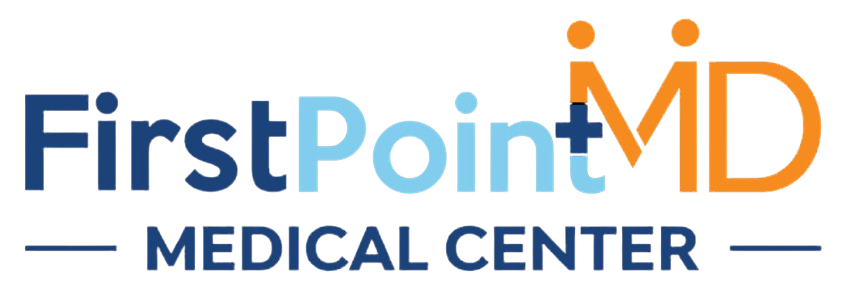High blood pressure—also known as hypertension—is a common yet serious health condition affecting millions of adults worldwide. Often called the “silent killer,” it usually has no noticeable symptoms but can significantly increase your risk for heart disease, stroke, kidney problems, and other life-threatening conditions.
The good news is that with the right medical guidance and lifestyle changes, high blood pressure can be effectively managed. Your Primary Care provider plays a central role in helping you monitor, control, and reduce the risks associated with hypertension.
In this article, we’ll explore how primary care supports high blood pressure management, the benefits of regular checkups, and strategies to help you maintain a healthy blood pressure range.
Understanding High Blood Pressure
Blood pressure is the force of blood pushing against the walls of your arteries. It’s measured in millimeters of mercury (mmHg) and recorded with two numbers:
-
Systolic pressure: The top number, measuring pressure during heartbeats
-
Diastolic pressure: The bottom number, measuring pressure between beats
Normal blood pressure is typically below 120/80 mmHg. A reading of 130/80 mmHg or higher is considered high and may require medical intervention.
Why Primary Care Is Essential in Hypertension Management
Your Primary Care doctor is your first line of defense against high blood pressure complications. Here’s how they help:
Early Detection and Diagnosis
Because hypertension often has no symptoms, routine blood pressure checks during primary care visits are essential. Your doctor can detect elevated readings early, allowing for prompt action before complications develop.
Individualized Treatment Plans
No two patients are the same. Your primary care provider will create a personalized plan that may include:
-
Medication prescriptions tailored to your health profile
-
Dietary recommendations (such as reducing sodium intake)
-
Exercise plans suitable for your fitness level
-
Stress management techniques
Ongoing Monitoring
Managing high blood pressure requires regular monitoring. Your doctor will:
-
Track your blood pressure trends over time
-
Adjust medications when necessary
-
Monitor for side effects
-
Ensure your treatment plan remains effective
Coordination with Specialists
If you have other conditions—such as diabetes, kidney disease, or heart issues—your primary care provider will coordinate with specialists to ensure your treatment is comprehensive and cohesive.
Lifestyle Changes Guided by Primary Care
While medication can be important, lifestyle adjustments are often the cornerstone of blood pressure management. Your primary care team can help you make and maintain healthy habits, such as:
-
Following the DASH diet: Emphasizing fruits, vegetables, whole grains, lean proteins, and low-fat dairy
-
Reducing salt intake: Limiting processed foods and adding flavor with herbs instead of sodium
-
Exercising regularly: Encouraging at least 150 minutes of moderate activity each week
-
Limiting alcohol: Reducing consumption to recommended guidelines
-
Maintaining a healthy weight: Losing even a small amount of excess weight can lower blood pressure
-
Managing stress: Practicing mindfulness, deep breathing, or yoga
The Importance of Regular Checkups
Hypertension can worsen over time if not properly managed. Consistent visits with your Primary Care doctor allow you to:
-
Catch and address rising blood pressure before it reaches dangerous levels
-
Monitor the effectiveness of lifestyle changes and medications
-
Receive up-to-date advice on prevention and management
Your doctor can also assess related health factors, such as cholesterol, blood sugar, and kidney function, to ensure a holistic approach to your well-being.
When to Seek Immediate Medical Attention
While most cases of high blood pressure can be managed through routine care, some situations require urgent medical attention. Seek help immediately if you experience:
-
Severe headache
-
Chest pain or shortness of breath
-
Sudden vision changes
-
Confusion or difficulty speaking
-
Weakness or numbness on one side of the body
These could be signs of a hypertensive crisis or another serious medical emergency.
Building a Partnership with Your Primary Care Provider
Effective high blood pressure management is a team effort between you and your doctor. By maintaining open communication, sharing your concerns, and following their recommendations, you’ll have the best chance of controlling your blood pressure and protecting your long-term health.
Your Primary Care provider will help you:
-
Set realistic health goals
-
Stay accountable with follow-up visits
-
Adjust your plan as your needs change
-
Empower you with knowledge to make healthier choices every day
Final Thoughts
High blood pressure may be silent, but its effects can be deadly if left unmanaged. Regular visits to your Primary Care provider are key to early detection, ongoing monitoring, and effective treatment. With the right combination of medical care and lifestyle adjustments, you can keep your blood pressure in a healthy range and reduce your risk of serious health problems.
Taking control of your blood pressure is one of the most important steps you can take for your overall health—don’t wait until symptoms appear. Schedule your next checkup today and make proactive health management a priority.


